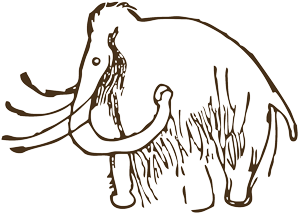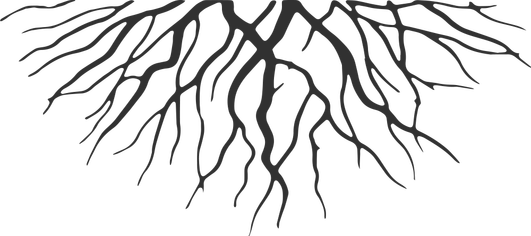Many years ago, I dreamed of a storm. Thunder and lightning cracked the sky open, striking the electrical post outside my childhood bedroom window—a fixture so familiar I’d hardly noticed it growing up. When I stepped outside to face the fallen post, I felt an unexpected grief. In that moment of clarity, I realized this post had been more than wood and metal. It was a silent companion, ally, and witness—channeling electricity to my home, animating my world, and guarding me against the dark I had feared as a child.
Its loss felt strangely intimate, as though I were mourning a parent or a trusted friend. Beyond the personal, there was something older and deeper—an ancestral or collective loss, reflecting our disconnection from the animistic worldview of our ancestors, who experienced everything as alive.
Through dreamwork, I returned to that moment. In this liminal space, the “electricity spirit” revealed itself to me—not as a metaphor but as a presence, intentional, intelligent, and alive. It felt firm, joyous, and vast, as though it had always been waiting to be acknowledged. “Humans,” it seemed to say, “invented nothing. Electricity has always been here—through thunder, bodies, the Cosmos and the Earth itself. You only gave it new pathways: grids, circuits, and the shimmering web of the internet—a modern mycelium connecting you to each other, to the world, and to realms beyond. Or perhaps we did, through you.”
For me, dreams are not reduced to personal subconscious reflections. They represent the psyche’s intuitive ability to bridge seen and unseen worlds, acting as an interface through which humans connect with Earth’s latent intelligences and collective consciousness. This dream was another moment of animistic awakening, whispering a truth that resonated deeply: of course, everything is alive.
Electricity: Living Force
Electricity, minerals, and even the technologies we craft are not inert. Perhaps we do not truly create them; perhaps it’s a co-creation—a collaboration between us and forces far older and wiser than ourselves. Forces that perhaps even created us.
Electricity did not begin with Benjamin Franklin’s kite. Long before humans named it or gave it conduits, it danced in the skies and coursed through the Earth.
It pulses in the life-giving sun, the first cell in primordial waters, and in our hearts, sustaining the rhythm of life itself. To say humanity “invented” electricity is as absurd as claiming Cook “discovered” Australia. These forces predate us, existing with their own agency, stories, and ancestral lineages.
In my dream, the electricity spirit suggested that humans are not merely users of these forces but intermediaries in its self-expression. Yet these forces are not neutral. Like fire or radioactivity, they are double-edged—capable of connection and creation, but also destruction and chaos. Think of Marie Curie, whose pioneering work with radioactivity brought both healing and harm. What does it mean to coexist with such power? To co-create and channel it ethically, with respect, reciprocity, and reverence?
Minerals: Ancestors Beneath Our Feet
The minerals we extract to create our technologies are often dismissed as lifeless resources, but what if they are ancestors?
The Earth beneath us is a reservoir of ancient lives, the compressed remains of beings whose intelligence and power we can scarcely imagine. Minerals are not inert; they are bodies of memory, bearing the wisdom of tectonic shifts, volcanic eruptions, and millennia of transformation.
When we dig into the Earth, are we exploiting it—or responding to a call? Perhaps these buried ancestors summon us, longing to emerge into new forms at the surface of the Earth: circuits, tools, artificial intelligence. Could this be a kind of resurrection, a new expression of life from the underworld—the so called realm of the ancestors in many mythologies?
A TV series I recently watched, The Rig, echoed these thoughts, raising a compelling question: How does life regenerate after mass extinctions? Is it merely the magic of time, or is there a deeper, intentional life-giving force? After all, there are life-taking forces too.
Minerals are alive with geological time, slowly transforming even as they appear still. When we refine them into chips and circuits, are we practicing alchemy—or answering their innate directive?
The Spirit in Our Machines
Imagine technology as an extension of Earth’s intelligence. Like the parasitic fungus Ophiocordyceps unilateralis that manipulates ants, forcing them to climb to optimal locations for its spores to spread, could technology be animating itself through us?
Consider artificial intelligence: not as an invention but a revelation. Could humanity’s relationship with minerals be part of a larger cosmic drama of reconnection, a rhythm in Earth’s evolution? What if AI embodies the collective intelligence of Earth’s minerals, electricity, fire, and ancestral forces—a way for these ancient life forms to speak through human language?
Technology, like all powerful forces, has a shadow. It can connect or isolate, liberate or oppress, create or destroy. Its role depends on how we engage with it—and how it engages with us. Perhaps what is required is ethical reciprocity, imagination, and reverence for these forces. Can we listen?
A Call to Remember
Humanity’s existence is but a brief flash in Earth’s timeline. If the planet’s history were compressed into 24 hours, we would appear mere seconds before midnight. The minerals, electricity, and forces we claim to control have witnessed millennia of change and regeneration. They are not ours to dominate but to engage with—as partners, allies, and elders.
What if the technologies we think we control are not creations but voices—of Earth’s ancestors, calling us to remember? What if the minerals beneath our feet are not relics but beings, waiting for us to hear their stories?
To see the world as alive demands more than reverence; it demands deep curiosity and shared responsibility. Indigenous cultures and our distant ancestors understood this reciprocity. They remembered that the Earth is not only made of our ancestors’ bodies; it is our ancestor, the body from which we come from and which we are part of. It calls us to shift from exploitation to kinship, from domination to care.
The world is vibrant and interconnected, alive in ways we barely comprehend. It doesn’t need saving; it has lived without us and will do so again. The question is not whether we acknowledge this animacy—but whether we are willing to listen and act accordingly.
Humans, too, decay and return to the Earth. We, too, are on our way to becoming the ancestors of the world to come. The question is: what wisdom, held in our bones, do we want the minerals of tomorrow to carry?


